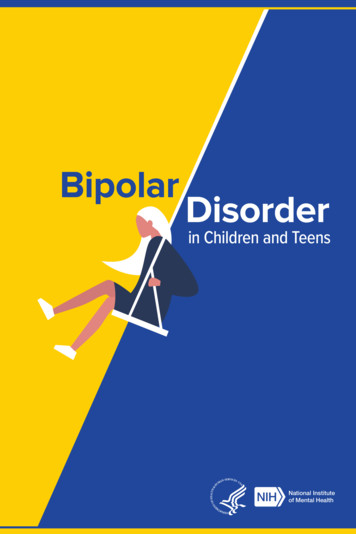Extrapyramydal Disorder-1.ppt [Read-Only] - USU
EXTRAPYRAMIDAL DISORDERS Movement disorders Degenerative disease 1
4 types of movements: Voluntary movement Semivoluntary movement ( unvoluntary) Involuntary movement Automatic movement 2
3
Movement disorders Extrapyramidal disorder Disorder of regulation of voluntary motoric activity without direct influence towards muscle strength, sensibility, or cerebellum. 4
Extrapyramidal disorder Hyperkinetic disorder: abnormal involuntary movements Hypokinetic disorder: reduction of movements. Movement disorders are caused by dysfunction of basal ganglia 5
Basal ganglia: Caudate nucleus Putamen Globus pallidus Subthalamic nucleus Substantia nigra 6
Diseases & syndrome with abnormal movements: Essential tremor (familial / benign) Parkinsonism Progressive supranuclear palsy Idiopathic torsion dystonia Chorea sydenham Sindroma Gilles de la Tourette Drug-induced movement disorders, etc. 7
Parkinsonism Parkinson syndrome 1. Primary / Idiopathic Paralysis agitans Parkinson disease 2. Secondary/Symptomatic Causes: - arteriosclerosis - anoxia /cerebral ischemia - drugs - toxic agent - encephalitis etc. 8
Parkinsonism (CON’T) 3. Paraparkinson / Parkinson plus - Wilson disease - Huntington disease - Normotensive Hydrocephalus 9
Parkinson disease Parkinson idiopathic Paralysis agitans - Most commonly be found - Middle age to old age 10
Etiology and pathogenesis The certain Etiology is unknown PD is due to cells degeneration dopamine decreased in substantia nigra 11
ACh --------------------------------- DA I DA ACh I ACh i DA 12
Hypotesis: Aging process: dopaminergic neuronal death !!! anti – oxydative-protective mechanism decreased Environmental toxin: - heavy metal (Iron, Zinc, mercury etc) - MPTP Genetic sensitivity Oxydative stress: dopamine reaction free radicals 13
Pathology Cutting of mid-brain: degeneration & neuronal death which contain melanin in substansia-nigra. Microscopic: In compacta zone: - Most of neuron are loss - Residual : containings Lewy-bodies 14
Lewy bodies in subst.nigra: 15
Clinical findings. Triad of symptoms: - rigidity - tremor - bradikinesis 1. tremor: - pill rolling tremor - during tension !!!, sleep disappear - resting tremor Parkinsonian – tremor 16
Clinical findings (Con’t) 2. 3. 4. 5. 6. 7. 8. Rigidity : “cogwheel” phenomenon. Bradikinese Weakness & fatique Dystonia Parkinsonian facies “mask-like” Micrographia Gait: Festinant gait Parkinsonian gait 17
Clinical findings (con’t) 9. freezing: late stage, suddlenly stop walking 10. Slowly speaking and monotone 11. Eye movements: - lack of blinking - eye movement disturb. - Glabella reflex ( ) 12. Pain: paresthesia of limbs 18
Clinical findings (con’t) 13. ANS disturbance: - salivary / excessive sweating -urinary incontinence etc. 14. Saliva !!! sialorrhea 15. Hypotension orthostatic hypotension 16. Depression 17. Dementia 19
Gait: 20
Tremor: 21
Rising: 22
Sitting: 23
Hypomimia: 24
Retropulsion: 25
Freezing: 26
Diagnostic procedure Diagnosis is made clinically based on clinical symptoms found EEG examination : may show diffuse slow wave MRI & CT Scan : may show cortical atrophy. 27
Treatment It is considered: due to dopamine deficiency in CNS. 1. Levodopa 2. Anticholinergic drugs: trihexyphenidyl 3. Antihistamine: diphenhydramine 4. Bromocriptine 5. Amantadine 6. Selegiline 28
TH DD L-tyrosine ----- l-dopa ----- DA TH: tyrosine hydroxylase DD: dopa-decarboxylase DA located outside vesicles will be catalyzed by enzymes : MAO(monoamine-oxydase) inside the neuron cell COMT(catechol-o-methyl-transferase) outside the neuron cell. 29
In peripheral : 1. l-dopa dopamine I dopa-decarboxylase v dopa-decarboxylase inhibitor carbidopa sinemet benserazide madopar b 30
2. l-dopa dopamine I catechol-O-methyltransferase (COMT) v COMT – inhibitor : - tolcapone - entacapone 31
Prognosis: The prognosis is still poor . 32
Diseases & syndromes with abnormal movements : Essential tremor (familial / benign) Parkinsonism Progressive supranuclear palsy Idiopathic torsion dystonia Chorea sydenham Sindroma Gilles de la Tourette Drug-induced movement disorders, etc. 33
Parkinsonism Parkinson syndrome 1. Primary/ Idiopathic Paralysis agitans Parkinson disease 2. Secondary / Symptomatic Well known causes : - arteriosclerosis - anoxia / cerebral ischemia - drugs - toxic agents - encephalitis, etc. 34
Parkinsonism (Con’t) 3. Paraparkinson / Parkinson plus - Wilson disease - Huntington disease - Normotensive Hydrocephalus 35
ESSENTIAL TREMOR “ Familial tremor “ “ Benign tremor “ “ Autosomal dominant “ Begin at teen-agers or young adults 36
Tremor usually affect one or both hands, head and voices, whereas foot is not affected. Neurological assessments show no other abnormality. Despite the longer the tremor the clearer the symptoms, usually it does not disturb ,but the patient feels ashamed. 37
Sometimes it disturbs fine and difficult movements, writing and speaking when laryngeal muscle is involved . Consuming small amount of alcohol temporary improvement is reported, but the mechanism has not been known yet. 38
Treatment - Diazepam 6 – 15 mg per day - Propranolol 40 - 120 mg per day - Primidone - Alprazolam - Not responsive: # thalamotomy # thalamic stimulation 39
CHOREA SYDENHAM Affecting children and young adults resulting from complication of streptococcus hemolytic A infection and the possible basic pathological features is arteritis. Approximately 30% of cases occur 2 or 3 months following rheumatoid fever or polyarthritis, the rest without such historys. 40
Onset can be acute or gradually within 4-6 months, can also occur during pregnancy or oral contraceptive users. Symptoms including abnormal chorea movements, sometimes unilaterally in mild cases. Changes of behavior In children may reveal easily to anger and doughty Labile of emotions 41
In 30% of cases involves the heart Treatment: bed rest, sedatives, prophylaxis antibiotics even though without acute rheumatoid fever . Penicillin injection to be continued orally until 20 years of age to prevent staphylococcal infection. The prognosis basically lies on the complication of the heart. 42
Drug--induced movement disorders Drug 1. 2. 3. 4. 5. 6. Parkinsonism Acute dystonia or dyskinesis Akathisia Tardive dyskinesis Neuroleptic malignant syndrome Others. 43
Parkinsonism. Complication of dopamine receptor inhibitor drugs: - phenothiazine - butyrophenone - thioxanthene - metoclopramide 44
Parkinsonism (Con’t) Symptoms : - rigidity - mask-like face - bradykinesis - tremor (seldom) Treatment : - Discontinue the drug - anti-cholinergic drugs (trihexyphenidyl) 45
Acute dystonia / dyskinesia blepharospasm torticollis facial grimacing following phenothiazine administration. Treatment: Intravenous anti-cholinergicdrug (benztropine 2 mg or diphenhydramine 50 mg). 46
Blepharospasm 47
Akathisia Motoric restlessness, compulsion to move or inability to sit still for more than a short period of time, keep standing or walking. Receiving phenothiazine Treatment: - Lowering the dose if possible - propranolol 40-120 mg/hari - anticholinergic drugs / benzodiazepines 48
Tardive dyskinesia Repetitive involuntary movements of the mouth, tongue and lips, occasionally accompanied by dystonic posturing or choreoathetotic movements of trunk and limbs. Mostly following administration of neurolep tic, metoclopramide, antihistamines, tricyclic antidepressant and chronic alcohol abuse. 49
50
Tardive dyskinesia (Con’t) Treatment: - Dopamine antagonists : haloperidol - Catecholamine-depleting agents: reserpine, tetrabenazine. - Baclofen - Calcium channel blocking agents - Vitamin E, etc. 51
Neuroleptic malignant syndrome An acute idiosyncratic reaction to neuroleptic medication due to central dopamine receptor blockade. May also originate from non-neurololeptic drugs: metoclopramide, domperidone, amphetamines, reserpine, tetrabenazine, tricyclic antidepressants with lithium or with MAO inhibitor and withdrawal of antiparkinsonian medication. 52
Neuroleptic malignant syndrome(Con’t) The use of cocaine and 3.4 methy- lene dioxymethamphetamine (MDMA) “Ecstasy” Symptoms are usually abrupt in onset, fever, encephalopathy with fluctuating confusion and agitation progressing to coma, labile BP, tachycardia, diaphoresis in association with dystonia and tremor. The couse is often rapid in untreated cases wit deterioration leading to cardiac failure , pulmonary congestion, pneumonia, renal failure and death. 53
Neuroleptic malignant syndrome (Con’t) Treatment: - Discontinue the neuroleptic drugs - Control of body temperature - Monitor the BP, urine, electrolytes, temperature change - Administer bromocriptine 75 -100 mg/day by NGT - Dantrolene sodium i.v and convert to oral as improvement occurs. 54
Others: Levodopa various abnormal movement is related to dosage. Bromocriptine, anticholinergic drugs, phenytoin, carbamazepine, amphetamine, lithium and oral contraceptive may also result in chorea ect. 55
Movement disorders Extrapyramidal disorder Disorder of regulation of voluntary motoric activity without direct influence towards 4 muscle strength, sensibility, or cerebellum. Extrapyramidal disorder Hyperkinetic disorder: abnormal involuntary movements . Extrapyramydal_disorder-1.ppt [Read-Only] [Compatibility Mode]
F41.1 Generalized anxiety disorder F40.1 Social phobia F41.2 Mixed anxiety and depressive disorder F33 Recurrent depressive disorder F43.1 Post-traumatic stress disorder F60.31 Borderline personality disorder F43.2 Adjustment disorder F41.0 Panic disorder F90 Hyperkinetic (attention deficit) disorder F42 Obsessive-compulsive disorder
9417 Depersonalization disorder SOMATOFORM DISORDERS 9421 Somatization disorder 9422 Pain disorder 9423 Undifferentiated somatoform disorder 9424 Conversion disorder 9425 Hypochondriasis MOOD DISORDERS 9431 Cyclothymic disorder 9432 Bipolar disorder 9433 Dysthymic disorder 9434 Major depres
Some children and teens with these symptoms may have . bipolar disorder, a brain disorder that causes unusual shifts in mood, energy, activity levels, and day-to-day functioning. With treatment, children and teens with bipolar disorder can get better over time. What is bipolar disorder? Bipolar disorder is a mental disorder that causes people to experience . noticeable, sometimes extreme .
Subthreshold Bipolar. Disorder. Bipolar II Disorder. Bipolar I Disorder. Psychiatrist. General Medical. No Treatment. Adapted from: Merikangas, et al.1 in Arch Gen Psychiatry. 2007;64(5):543552- The proportion of individuals with bipolar I disorder, bipolar II disorder or subthreshold bipolar disorder
PPT 5 3 Contact Hours DHCP and Auto-configuration, Firewalls and NAT, ICMPv4 PPT 6 2 Contact Hours IP Fragmentation, DNS, Broadcasting and Local Multicasting - IGMP PPT 7 2 Contact Hours Routing Protocols PPT 8 2 Contact Hours IPv6 Transition issues, Protocol basics PPT 9 2 Contact Hours Addressing, Options and Extension headers, ICMPv6 PPT 10
Generalised anxiety disorder (GAD) Obsessive compulsive disorder (OCD) Health Anxiety Panic disorder Post traumatic stress disorder (PTSD) Social anxiety disorder Specific phobias Separation anxiety disorder
ADD/ADHD Anger/Aggression Anxiety Disorder Autism Spectrum Disorder Bipolar Disorder Borderline Personality Bullying Conduct Disorder Cutting/Self Harm Depression Dual/Concurrent/Co-Morbid Eating Disorders Fetal Alcohol Spectrum Disorder Grief Learning Disability Mood Disorders Obsessive Compulsive Disorders Oppositional Defiant Disorder
the asset management industry and we devote special attention to the international diversification of portfolios and the problem of global asset allocation. We also use international data to illustrate the quantitative tools employed in the industry. The final class in this segment examines emerging markets and how the globalization process has affected asset prices. II. Performance .
![Extrapyramydal Disorder-1.ppt [Read-Only] - USU](/img/227/bms166-slide-extrapyramidal-disorders.jpg)






















